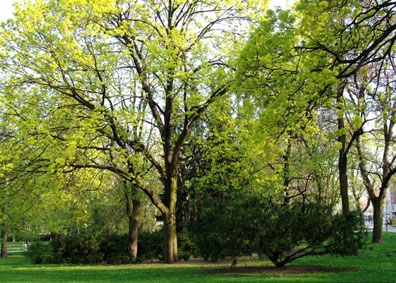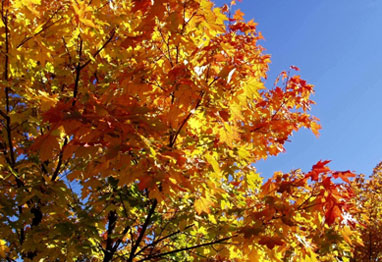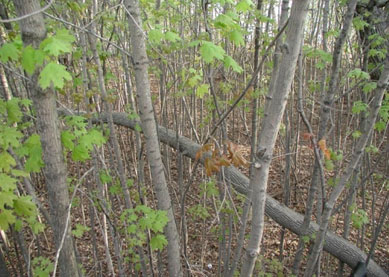The Norway maple is a European variety first introduced to this country as an ornamental. It is sometimes difficult to think of it as an invasive because it is so often found along public streets. Its ability to withstand a wide range of soils and climate changes along with its height and spread made it an opportunistic replacement for the many street side elms that succumbed to disease.

The Norway maple typically grows to more than sixty feet in height with a spread of fifty to seventy feet. In open areas branching begins lower to the ground than when it grows in a heavily forested area.
In the fall, the Norway maple becomes part of the attractive fall foliage for which New England has become famous.

Leaves with their characteristic shape and bright yellow-green flowers develop in the spring. Breaking the veins of a leaf produces a milky white sap, a means of distinguishing this maple from others. Fruits mature during the summer into winged blades that look like helicopter blades with a seed at the center.

Norway maples produce a profusion of seeds that easily result in local infestation.

Research has shown that forests invaded by Norway maple suffer losses in diversity of native wildflowers compared with forests in which the canopy is dominated by native species such as sugar maple. This is due at least in part to the dense shade cast by Norway maples, and to the shallow roots competing with other vegetation. Those shallow roots result in another common sight, the break up of sidewalks at street side locations.
